Your cart is currently empty!
Month: July 2024
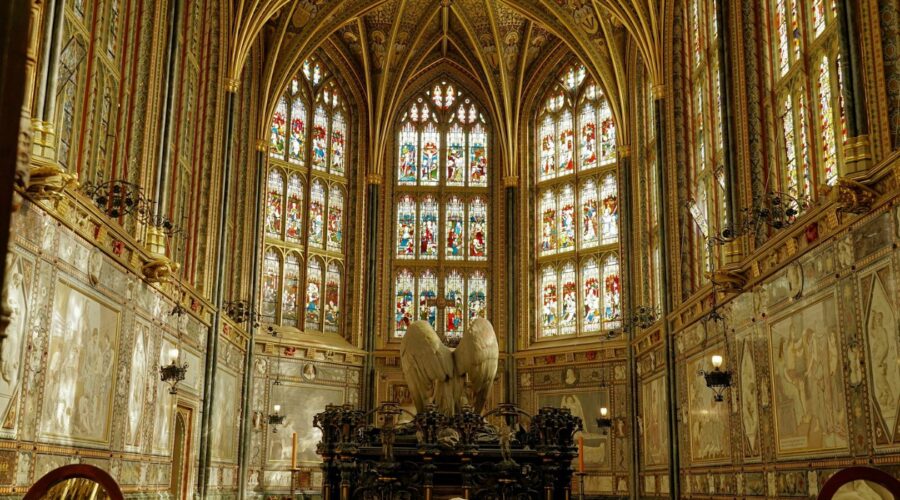
Bethel Church: Pastor Bill Johnson and His Impact on Modern Christianity
Introduction
Bethel Church, a prominent megachurch in Redding, California, has gained widespread recognition under the leadership of its renowned pastor, Bill Johnson. Known for his charismatic teachings and emphasis on the miraculous, Johnson has become a pivotal figure in the Pentecostal and broader charismatic movement.
This blog post aims to provide an in-depth exploration of Pastor Bill Johnson and his multifaceted ministry. We will delve into his early life, theological beliefs, leadership style, and the impact he has had on Bethel Church and the global Christian community.
Early Life and Education
An Evangelical Upbringing
William “Bill” Johnson was born in 1951 in Wisconsin to devout Christian parents. He grew up in a conservative evangelical environment and attended a small Assemblies of God church.
A Call to Ministry
As a teenager, Johnson experienced a profound encounter with God that ignited a passion for ministry within him. He attended Rhema Bible Training Center in Tulsa, Oklahoma, where his charismatic beliefs and teachings began to take shape.
Theological Beliefs
The Power of the Holy Spirit
Central to Johnson’s theology is the belief in the power and presence of the Holy Spirit. He teaches that the Holy Spirit is not merely a passive influence but an active force that empowers believers to live supernatural lives.
Healing and Miracles
Johnson is well-known for his emphasis on healing and miracles. He believes that God’s love and power are manifested through supernatural healing and that believers have the authority to pray for the sick and expect results.
Prophetic Words and Revelation
Johnson also places great importance on prophetic words and revelation. He believes that God speaks to his people through dreams, visions, and words of knowledge, and that these messages can guide and empower Christians in their daily lives.
Leadership Style
A Shepherd’s Heart
Johnson is known for his pastoral and compassionate leadership style. He emphasizes the importance of shepherding the flock, building intimate relationships with believers, and creating a culture of love and support.
Delegation and Empowerment
Despite the size of Bethel Church, Johnson has fostered a culture of teamwork and empowerment. He has strategically delegated responsibilities to a team of gifted leaders, allowing them to grow and develop in their ministry roles.
Innovation and Outreach
Johnson is not afraid to embrace innovation and reach out to new audiences. Bethel Church has become known for its creative worship style, its use of technology, and its various outreach programs.
Bethel Church
Growth and Expansion
Under Johnson’s leadership, Bethel Church has experienced significant growth and expansion. The church now has a congregation of over 11,000 members and has planted churches in multiple locations around the world.
The Bethel School of Supernatural Ministry
Johnson founded the Bethel School of Supernatural Ministry (BSSM) in 1998. This residential program equips students with a practical understanding of the supernatural and prepares them for ministry.
International Impact
Through conferences, books, and social media, Johnson and Bethel Church have made a global impact. Their teachings on the Holy Spirit, healing, and miracles have resonated with Christians worldwide.
Criticisms and Controversies
Prosperity Gospel Accusations
Some critics have accused Bethel Church of promoting a “prosperity gospel” that emphasizes material wealth and health. Johnson has defended his teachings, claiming that they are rooted in biblical principles.
Authority and Accountability
Others have raised concerns about Johnson’s authority and the church’s accountability. Questions have been raised about the church’s financial transparency and the way Johnson’s teachings are presented.
Conclusion
Pastor Bill Johnson and Bethel Church have had a profound impact on modern Christianity. Johnson’s charismatic teachings, emphasis on the Holy Spirit, and passionate pastoral leadership have inspired and equipped countless believers.
While there may be criticisms and controversies surrounding the church, there is no doubt that it has sparked a renewed interest in the supernatural and encouraged Christians to embrace the power of the Holy Spirit.
Through the Bethel School of Supernatural Ministry and its global reach, Johnson and Bethel Church continue to influence the Christian landscape and equip believers to live supernatural lives.
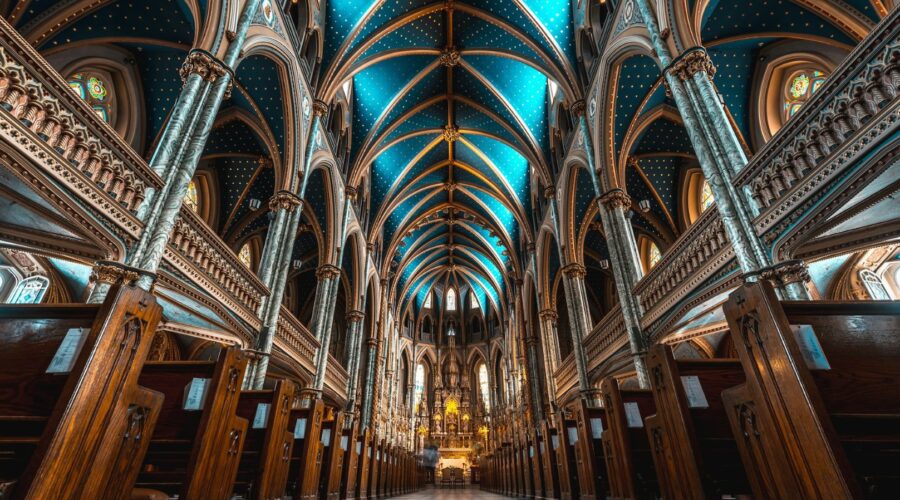
The Beautiful Savior: Delving into the Concept and Its Profound Implications
Introduction
The concept of a “Beautiful Savior” is a compelling and multifaceted one that has captured the imagination of countless people throughout history. It encapsulates the idea of a divine or extraordinary figure who comes to rescue humanity from suffering, darkness, or despair. In this detailed blog post, we will explore the various aspects of the Beautiful Savior archetype, its origins, its significance in different cultures and religions, and its profound implications for our understanding of humanity and the meaning of life.
Origins and Evolution of the Beautiful Savior
The origins of the Beautiful Savior archetype can be traced back to ancient mythology and folklore. In many cultures around the world, stories have been told of heroes, gods, or other extraordinary beings who descend from the heavens or emerge from the unknown to save humanity from some great evil or danger. These figures often possess superhuman powers, divine beauty, and a compassionate nature, embodying the hope for salvation and redemption.
Examples of Beautiful Saviors can be found in various ancient religions and mythologies, such as:
- Prometheus in Greek mythology, who stole fire from the gods to give to humanity
- Jesus Christ in Christianity, who sacrificed himself to redeem humankind from sin
- Krishna in Hinduism, who descended to Earth to restore balance and protect the righteous
The Significance of the Beautiful Savior in Religion and Spirituality
In many religions, the Beautiful Savior figure plays a central role in the narrative of salvation and redemption. They are often seen as mediators between humanity and the divine, offering hope and guidance in the face of human suffering and imperfection.
For example, in Christianity, Jesus Christ is considered the ultimate Beautiful Savior. His death and resurrection are seen as an act of sacrificial love that saves humanity from eternal damnation. Similarly, in Buddhism, the bodhisattvas are enlightened beings who postpone their own enlightenment to help guide others towards liberation.
The Beautiful Savior in Literature and Art
The Beautiful Savior archetype has also had a profound influence on literature and art throughout history. From classical epics to contemporary novels, writers and artists have explored the themes of salvation, redemption, and the power of divine or extraordinary beings.
Some notable examples include:
- The character of Frodo Baggins in J.R.R. Tolkien’s The Lord of the Rings, who carries the burden of the One Ring to save Middle-earth
- The painting “The Sistine Madonna” by Raphael, which depicts the Virgin Mary and the infant Jesus as symbols of hope and divine love
- The novel To Kill a Mockingbird by Harper Lee, where Atticus Finch represents a compassionate and courageous savior figure who stands up for justice in the face of prejudice
The Psychological and Emotional Impact of the Beautiful Savior
The concept of the Beautiful Savior can have a significant impact on our psychology and emotions. It can provide us with a sense of hope, comfort, and reassurance in the face of adversity. By embodying the qualities of love, compassion, and sacrifice, Beautiful Saviors can inspire us to strive for our own moral and spiritual growth.
At the same time, it is important to be cautious of over-reliance on external savior figures. True salvation and empowerment come from within ourselves and through our own efforts to live meaningful and compassionate lives.
The Beautiful Savior and the Meaning of Life
The Beautiful Savior archetype raises important questions about the meaning of life and our place in the universe. It suggests that human existence is not merely about survival or the pursuit of material wealth but also about transcendence and spiritual growth. By embracing the principles of love, compassion, and selflessness, we can strive to become our own “beautiful saviors” and contribute to a more just and fulfilling world.
Conclusion
The concept of the Beautiful Savior is a complex and captivating one that speaks to our deepest hopes and aspirations for salvation and redemption. From ancient mythology to modern art, this archetype has inspired countless people throughout history and continues to offer profound insights into the human condition and the meaning of life. By understanding and embracing the qualities of love, compassion, and self-sacrifice, we can strive to create a world where the light of the Beautiful Savior shines brightly upon all.
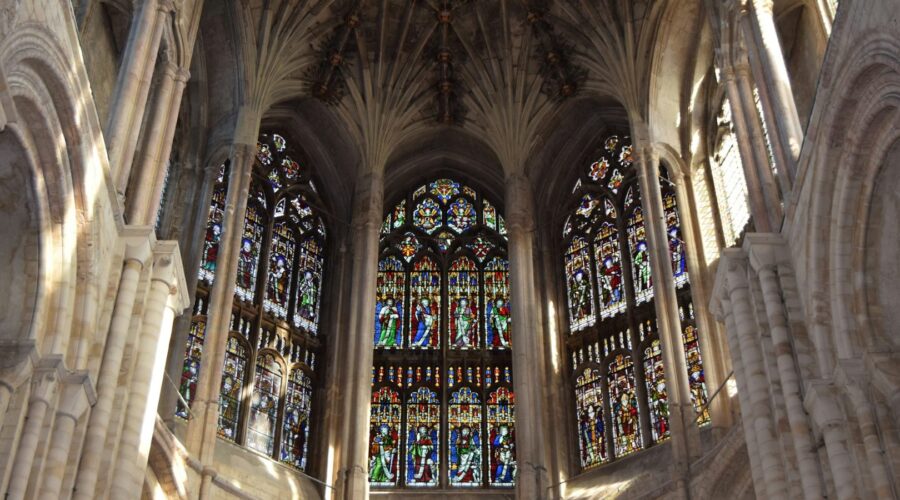
Bethel Church: A Comprehensive Guide to Beni Johnson and Her Controversial Ministry
Who is Beni Johnson?
Beni Johnson is the co-senior pastor of Bethel Church in Redding, California, alongside her husband, Bill Johnson. She is a well-known figure in the charismatic movement, and her teachings on healing, faith, and prosperity have garnered both praise and criticism.
Bethel Church’s Controversies
Bethel Church has been embroiled in several controversies over the years. These include:
- False Teachings: Critics have accused Johnson of promoting false doctrines, such as the “manifest sons of God” teaching, which claims that Christians are destined to become divine beings.
- Financial Mismanagement: Concerns have been raised about Bethel Church’s financial practices, including its lavish spending and lack of accountability.
- Allegations of Abuse: Former members have alleged that they experienced spiritual, emotional, and physical abuse within the church.
Johnson’s Response to Criticism
Johnson has defended her teachings and denied the allegations against her church. She has stated that she believes the “manifest sons of God” teaching is biblical and that Bethel Church is committed to financial transparency and accountability.
Key Aspects of Johnson’s Ministry
Despite the controversies, Johnson’s ministry continues to attract followers. Some key aspects of her teachings include:
Emphasis on Healing and Deliverance
Johnson believes that God desires to heal and deliver people from physical, emotional, and spiritual ailments. She holds healing services and teaches that Christians have the authority to pray for the sick and see them healed.
Prosperity Gospel
Johnson teaches that God wants Christians to be prosperous financially. She believes that giving to the church and following God’s principles can lead to material blessings.
Prophetic Ministry
Johnson is known for her prophetic ministry. She claims to receive messages from God and believes that Christians can discern the voice of the Holy Spirit for guidance.
Resources
For more information on Bethel Church and Beni Johnson, please visit the following resources:
Conclusion
Beni Johnson and Bethel Church remain controversial figures in the Christian world. While some praise their emphasis on healing and faith, others have raised concerns about their teachings and practices. Ultimately, it is up to each individual to decide whether or not they believe in Johnson’s ministry.
Table of Frequently Asked Questions (FAQs)
Question Answer Who is Beni Johnson? Beni Johnson is the co-senior pastor of Bethel Church in Redding, California. What are Bethel Church’s controversies? Bethel Church has been embroiled in controversies over false teachings, financial mismanagement, and allegations of abuse. What are key aspects of Johnson’s ministry? Key aspects include emphasis on healing, prosperity gospel, and prophetic ministry. What resources are available for more information on Bethel Church? Resources include the Bethel Church website, Charisma News, and Religion News. 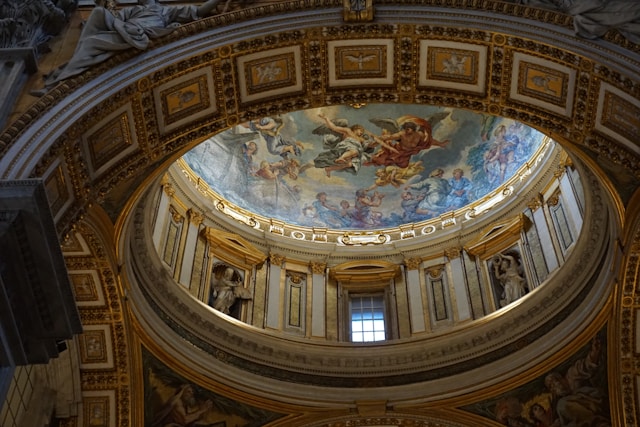
Discover the Majestic Basilica of the Sacred Heart: A Sacred Architectural Masterpiece
About the Basilica
Nestled in the vibrant heart of Paris, the Basilica of the Sacred Heart (Sacré-Cœur) stands as a beacon of spirituality and architectural grandeur. Consecrated in 1919, this awe-inspiring basilica is dedicated to the Sacred Heart of Jesus and has become one of the most iconic landmarks of the French capital.
Historical Context
The basilica’s conception emerged amidst the Franco-Prussian War and the Paris Commune uprising. Believers attributed these events to a decline in religious faith, prompting the construction of a grand basilica to expiate sins and consecrate Paris to the Sacred Heart.
Architectural Marvel
The basilica’s stunning Romanesque-Byzantine architecture, designed by Paul Abadie, seamlessly blends traditional and innovative elements. Its imposing façade, adorned with intricate carvings and statues, greets visitors with a sense of grandeur.
Exterior Features
- Two iconic domes: The smaller one over the choir and the larger one over the transept, symbolizing the Sacred Heart of Jesus and the Church Triumphant, respectively.
- Bell towers: Three bell towers – one at each corner – house a collection of 18 bells, creating a melodious symphony.
- Mosaics: The vestibule and interior walls are adorned with vibrant mosaics depicting biblical scenes and stories of saints.
Interior Splendor
Stepping inside the basilica is a breathtaking experience. The expansive nave, soaring vaults, and intricate stained-glass windows create an atmosphere of awe and reverence.
- Main altar: The centerpiece of the basilica, the main altar is made of white marble and adorned with a gold mosaic depicting the Sacred Heart.
- Apse: The apse features a colossal mosaic of Christ in Majesty, surrounded by angels and saints.
- Crypts: Beneath the basilica are two crypts, one containing the relics of Saint Margaret Mary Alacoque, to whom the devotion to the Sacred Heart is attributed, and the other housing the tombs of numerous bishops.
Religious Significance
Beyond its architectural splendor, the Basilica of the Sacred Heart holds immense religious significance. It serves as a pilgrimage site for Catholics worldwide, who come to venerate the Sacred Heart of Jesus.
Devotional Practices
- Masses: Regular masses are held in the basilica throughout the week, offering a sacred space for prayer and worship.
- Exposition of the Blessed Sacrament: The Eucharist is exposed in the basilica for adoration, providing an opportunity for devotees to deepen their spiritual connection.
- Pilgrimages: Organized pilgrimages from various countries and regions visit the basilica to honor the Sacred Heart and seek blessings.
Tourism and Accessibility
The Basilica of the Sacred Heart is a popular tourist destination, attracting visitors from around the world. Its convenient location on the summit of the Butte Montmartre offers panoramic views of the city, making it an ideal spot for sightseeing and photography.
Visiting Information
- Hours: The basilica is open daily from 6:00 AM to 10:30 PM.
- Admission: Entrance to the basilica is free of charge.
- Getting there: The basilica is accessible by metro (Anvers station on line 2) or by bus (lines 30, 54, and 85).
- Accessibility: The basilica is wheelchair accessible.
Conclusion
The Basilica of the Sacred Heart is a testament to the enduring power of faith, architectural ingenuity, and the human spirit. Its majestic beauty and profound religious significance make it a must-see destination for pilgrims, tourists, and anyone seeking a glimpse into the grandeur of human creativity.
Whether for spiritual reflection, architectural appreciation, or simply a breathtaking panoramic view, a visit to the Basilica of the Sacred Heart is an unforgettable experience that will leave a lasting impression.
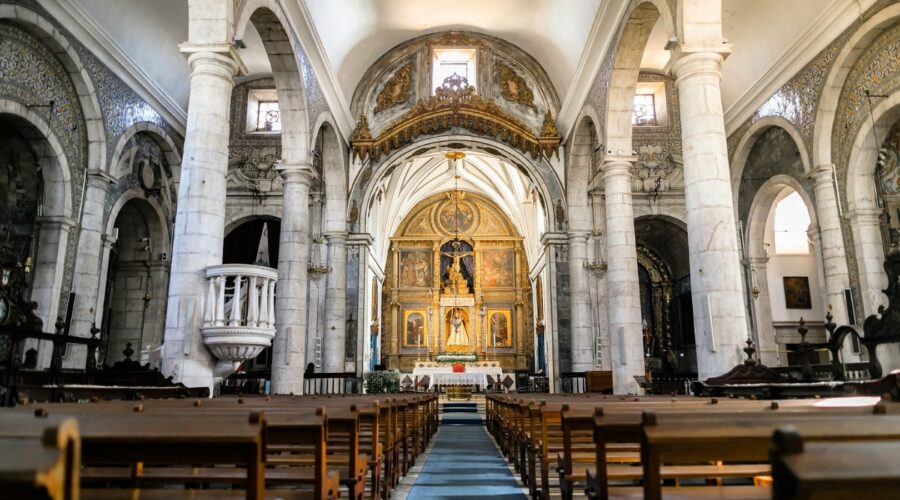
Basilica of Bom Jesus: A Historical and Architectural Masterpiece in Goa
The Basilica of Bom Jesus is a UNESCO World Heritage Site and a must-visit destination in Goa. Known for its stunning architecture, rich history, and the enshrined remains of Saint Francis Xavier, the basilica attracts thousands of pilgrims and tourists each year.
History
The Basilica of Bom Jesus was built by the Society of Jesus (Jesuits) in the 16th century, during the Portuguese colonial period. The construction began in 1594 and was completed in 1605. The basilica was dedicated to the Infant Jesus, and its name means “Basilica of the Good Jesus”.
In 1622, the remains of Saint Francis Xavier, a Jesuit missionary who died in China, were brought to Goa and interred in the basilica. The saint’s tomb quickly became a destination for pilgrims, and the basilica’s importance grew over the centuries.
Architecture
The Basilica of Bom Jesus is a fine example of Baroque architecture. The exterior is characterized by its whitewashed facade, ornate ornamentation, and twin towers. The interior is equally impressive, with its high ceilings, gilded altars, and elaborate paintings.
Facade
The facade of the basilica is divided into two sections by a central pediment. The lower section features a series of niches with statues of saints and prophets, while the upper section has a large window flanked by two smaller windows.
Towers
The two towers of the basilica are topped by octagonal bell-shaped domes. The towers are adorned with pilasters and cornices, and they provide a striking silhouette against the sky.
Interior
The interior of the basilica is divided into a nave and two aisles. The nave is separated from the aisles by a series of arches, and the ceiling is decorated with intricate frescoes.
Chapels
The basilica contains several chapels, each dedicated to a different saint. The most notable chapel is the Chapel of Saint Francis Xavier, which houses the saint’s tomb.
Altarpieces
The basilica is home to several impressive altarpieces, including the main altarpiece, which depicts the life of Jesus Christ. The altarpieces are made of wood and are covered in gold leaf.
Paintings
The basilica is adorned with a number of paintings, both on the walls and on the ceiling. The paintings depict biblical scenes and the lives of saints.
Saint Francis Xavier
Saint Francis Xavier was a Jesuit missionary who played a key role in spreading Christianity in Asia. He was born in Spain in 1506 and joined the Jesuit order in 1540.
Saint Francis Xavier spent the next 10 years traveling throughout Asia, preaching the Gospel and baptizing converts. He died in China in 1552, at the age of 46.
Saint Francis Xavier was canonized in 1622, and his remains were brought to Goa and interred in the Basilica of Bom Jesus.
Pilgrimage
The Basilica of Bom Jesus is a popular destination for pilgrims from all over the world. Pilgrims come to pray at the tomb of Saint Francis Xavier and to ask for his intercession.
The basilica is particularly crowded during the feast of Saint Francis Xavier, which is celebrated on December 3rd. During this time, pilgrims can participate in a variety of events, including processions, Masses, and special prayers.
Tips for Visiting
Here are a few tips for visiting the Basilica of Bom Jesus:
- Dress appropriately. The basilica is a religious site, so it is important to dress modestly.
- Be respectful. The basilica is a place of worship, so it is important to be respectful of the people who are praying.
- Take your time. The basilica is a large and beautiful building, so it is worth taking your time to explore it.
- Consider hiring a guide. A guide can provide you with a more in-depth tour of the basilica.
Conclusion
The Basilica of Bom Jesus is a stunning architectural masterpiece and a significant religious site. It is a must-visit destination for anyone who is interested in history, architecture, or religion.
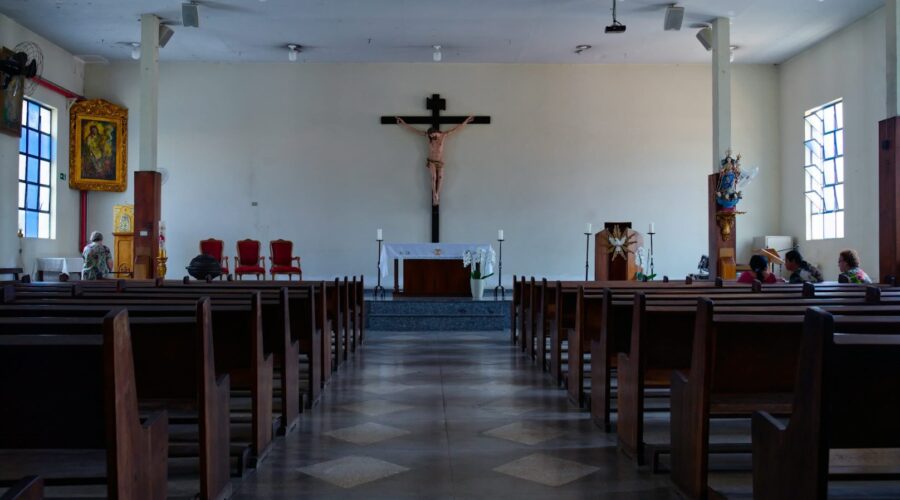
Discover the Enchanting Basilica de San Juan: A Historical and Architectural Masterpiece
Introduction
Nestled in the heart of Puerto Rico’s vibrant capital, San Juan, the Basilica de San Juan Bautista is a testament to the island’s rich history, architectural prowess, and enduring faith. Built in the 16th century, this awe-inspiring structure has stood the test of time, becoming a beloved landmark and a symbol of the city’s unwavering spirit. In this comprehensive guide, we will delve into the captivating story and architectural wonders of the Basilica de San Juan, unraveling its significance as a cultural and spiritual icon.
Historical Significance
The Basilica de San Juan was founded in 1521 by Spanish conquistadors as the first Christian parish on the island. Its origins trace back to the construction of a modest chapel in 1508, which served as a place of worship for early Spanish settlers. Over the centuries, the chapel underwent several expansions and renovations, culminating in the magnificent basilica we see today.
In 1590, Pope Sixtus V elevated the chapel to the status of a parish church. In 1954, it was further elevated to the rank of minor basilica by Pope Pius XII. This designation holds great religious significance, recognizing the basilica’s architectural splendor and its role as a center of pilgrimage and worship.
Architectural Marvel
The Basilica de San Juan is an architectural marvel that showcases a harmonious blend of Gothic, Renaissance, and Baroque styles. Its imposing facade features a grand arched entrance, framed by two bell towers that soar upwards, reaching a height of 30 meters.
Gothic Elements
The Gothic influence is evident in the basilica’s ribbed vaults, pointed arches, and stained glass windows. The interior is adorned with elaborate tracery and intricate carvings, creating an ethereal and awe-inspiring atmosphere.
Renaissance Accents
The Renaissance style is reflected in the basilica’s symmetrical facade and the use of classical motifs, such as pilasters and pediments. The main altar, crafted from Carrara marble, is a testament to the exquisite craftsmanship of the period.
Baroque Embellishments
Baroque elements can be found in the basilica’s opulent interior, characterized by ornate decorations, gilded surfaces, and dramatic lighting. The ceiling is adorned with vibrant frescoes, depicting scenes from the life and teachings of John the Baptist.
Interior Splendors
The interior of the Basilica de San Juan is a treasure trove of artistic and historical significance. Among its highlights are:
Main Altar
The main altar, выполнен из Carrara marble, is the centerpiece of the basilica. It is adorned with intricate carvings, depicting scenes from the life of John the Baptist. The altar is surmounted by a stunning painting of the Virgin of Candelaria, patron saint of the Canary Islands.
Stained Glass Windows
The basilica boasts stunning stained glass windows that fill the interior with vibrant hues of light. These windows depict scenes from the Bible, the history of Puerto Rico, and the life of John the Baptist.
Transepts and Side Altars
The transepts house several side altars, each dedicated to a different saint. These altars are adorned with elaborate carvings, paintings, and sculptures, showcasing the artistic mastery of the colonial era.
Cultural and Religious Significance
The Basilica de San Juan is not merely an architectural masterpiece but also a vibrant center of faith and cultural heritage. It is a place of pilgrimage for Catholics from all over the island and beyond.
Feast of San Juan Bautista
Every June 24th, the basilica celebrates the Feast of San Juan Bautista (Saint John the Baptist), its patron saint. This is a major religious and cultural event that attracts thousands of visitors from around the world.
Baptismal Font
The baptismal font located within the basilica is said to have been used to baptize Juan Ponce de León, the Spanish conquistador who explored Florida. This font holds great historical and spiritual significance for the people of Puerto Rico.
Cultural Center
The basilica also serves as a cultural center, offering exhibitions, concerts, and educational programs. It is a place where history, faith, and the arts converge, fostering a deep appreciation for Puerto Rico’s rich cultural heritage.
Tips for Visiting
* **Book a guided tour:** Guided tours are available for a fee and provide an in-depth look at the basilica’s history, architecture, and religious significance.
* **Attend a religious service:** Attending a Mass or other religious service in the basilica is a memorable way to experience its spiritual atmosphere.
* **Explore the surrounding area:** The basilica is located in the heart of Old San Juan, a UNESCO World Heritage Site. Take some time to explore the charming streets and alleys, discover historical landmarks, and indulge in the local cuisine.
* **Dress appropriately:** When visiting the basilica, it is important to dress respectfully. Modest clothing that covers shoulders and knees is recommended.
* **Respect the sanctity of the space:** The Basilica de San Juan is a place of worship. Be mindful of your behavior and refrain from loud talking or other disruptive actions.Conclusion
The Basilica de San Juan is a captivating masterpiece that embodies the spirit of Puerto Rico. Its rich history, stunning architecture, and deep religious significance have made it a beloved icon for generations. Whether you are a devout Catholic seeking spiritual solace or a traveler seeking cultural enlightenment, the Basilica de San Juan offers an unforgettable experience that will leave a lasting impression.
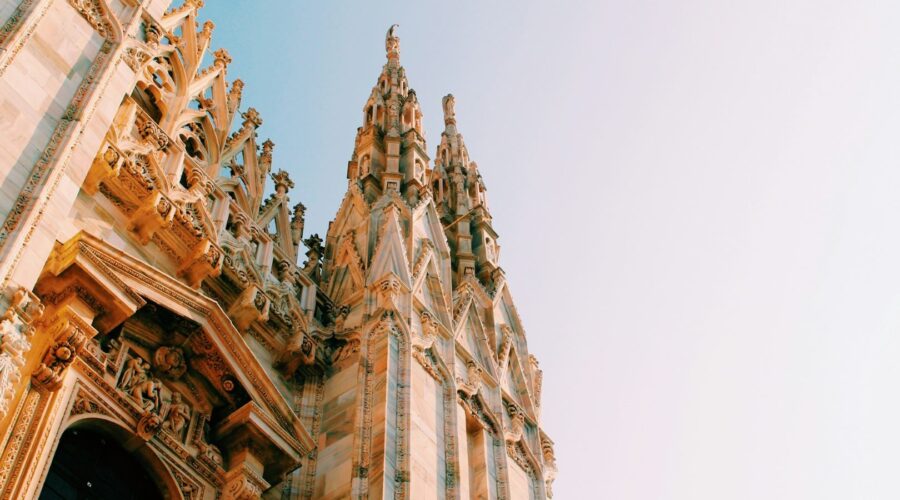
Explore the Majestic Architecture and History of Basilica Churches
Basilica churches, with their towering grandeur and historical significance, stand as architectural wonders that have shaped the landscape of Christianity for centuries. Delve into the world of these sacred structures to discover their captivating features, rich symbolism, and enduring legacy.
A Journey Through History: The Evolution of Basilica Churches
The term “basilica” originates from the Greek word “basilike”, meaning “royal hall”. Initially, basilicas served as public buildings in ancient Rome, used for administration, law courts, and commerce. However, in the early Christian era, they were adapted for religious purposes, becoming the primary places of worship for the early Christian community.
Over time, the basilica form evolved, incorporating elements from Roman architecture and Christian symbolism. By the 4th century, the classic basilica design emerged, characterized by its:
- Rectangular shape
- Nave divided by rows of columns or pillars (the arcades)
- Elevated central aisle (the nave)
- Lower side aisles
- Apsis at the east end, housing the altar and sanctuary
Architectural Features of a Basilica Church
Nave and Arcades
The nave, the central and widest part of the basilica, is flanked by arcades, which support the upper walls and roof. The arcades create a sense of grandeur and spaciousness, drawing the eye towards the altar at the far end.
Apse
The apse, a semicircular or polygonal recess at the east end of the basilica, is the symbolic focus of the church. It houses the altar, where the Eucharist is celebrated, and is often adorned with elaborate mosaics or frescoes depicting biblical scenes and saints.
Transepts
Transepts, perpendicular arms extending from the nave, form the cross-shaped plan of many basilicas. They increase the building’s capacity and emphasize the importance of the altar.
Triforium and Clerestory
Above the arcades, there may be a triforium, a narrow passage or gallery, and a clerestory, a row of windows that illuminate the nave. These features add verticality and an ethereal quality to the space.
Symbolism and Liturgical Function
Beyond their architectural splendor, basilica churches are imbued with profound symbolism and liturgical significance:
Nave: The Journey of Faith
The nave symbolizes the path of the faithful through life, leading them towards the sanctuary and communion with God.
Apse: The Heavenly Realm
The apse represents the heavenly throne of God, where the Eucharist is celebrated as a foretaste of the heavenly banquet.
Transepts: The Arms of Christ
The transepts extend like the arms of Christ, embracing the congregation and uniting them in the worship of God.
Famous Examples of Basilica Churches
Throughout history, numerous basilica churches have been constructed, each with its unique architectural features and historical significance:
- St. Peter’s Basilica, Rome: The largest basilica in the world and the papal cathedral of the Catholic Church, St. Peter’s is renowned for its immense dome and Michelangelo’s “Pietà” sculpture.
- Basilica di San Giovanni in Laterano, Rome: The cathedral of the Diocese of Rome, it is considered the oldest public basilica in the West and holds great historical and liturgical importance.
- Basílica de la Sagrada Família, Barcelona: Gaudí’s unfinished masterpiece, famous for its intricate Gothic Revival architecture, stained glass windows, and soaring towers.
- Notre Dame de Paris, Paris: A Gothic masterpiece known for its flying buttresses, elaborate sculptures, and iconic rose window.
- St. Paul’s Cathedral, London: A landmark of the British capital, known for its neoclassical dome and grand interiors.
Tips for Visiting a Basilica Church
- Dress respectfully: As sacred spaces, basilica churches typically request modest attire.
- Be mindful of noise: Silence and reverence are generally observed, so avoid loud conversations or disruptions.
- Take your time: Basilica churches are filled with artistic treasures and historical details. Allow ample time to explore and appreciate their beauty.
- Attend a service: If possible, participate in a Mass or other liturgical service to experience the spiritual and liturgical significance of the basilica.
- Do some research: Enhance your visit by reading up on the specific basilica you’re visiting to gain insights into its history and architecture.
Conclusion
Basilica churches stand as testaments to the architectural ingenuity and spiritual aspirations of countless generations. Through their majestic designs and profound symbolism, they continue to inspire awe, devotion, and a sense of connection to the divine. Whether you’re an architecture enthusiast, a history buff, or a seeker of spiritual enlightenment, basilica churches offer an unparalleled experience that will leave a lasting impression.
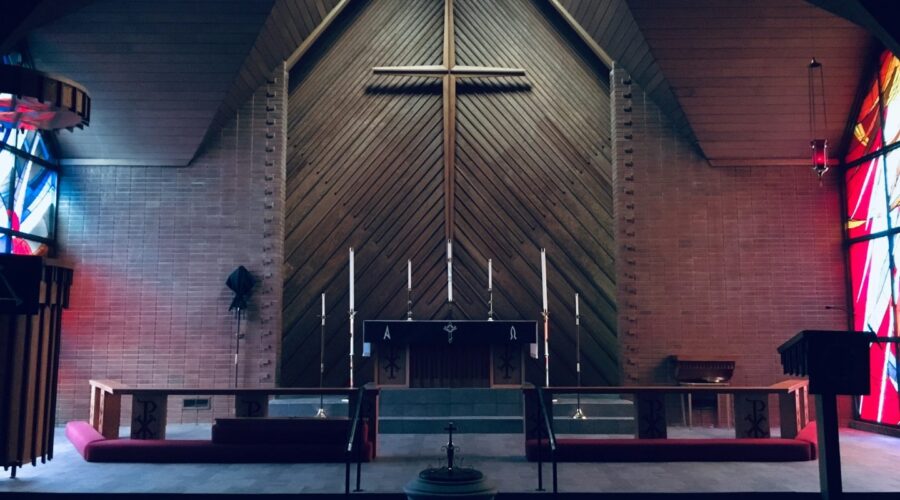
Unveiling the Erudite Athanasius Kircher: A Polymathic Pioneer of Science and the Arts
Introduction
Athanasius Kircher was a 17th-century German polymath whose vast knowledge spanned an astonishing array of disciplines. As a Jesuit priest, scholar, inventor, scientist, and collector, Kircher left an unparalleled legacy in the annals of Western thought. This comprehensive blog post delves into the fascinating life and contributions of this intellectual giant, exploring his pioneering work in fields ranging from Egyptology to optics.
Early Life and Education
Born in 1602 in Geisa, Germany, Kircher displayed an unquenchable thirst for knowledge from a tender age. He entered the Jesuit novitiate in 1618 and pursued his studies in philosophy, theology, and mathematics. His exceptional intellect shone through, and he quickly ascended the academic ranks, becoming a professor at the Jesuit College in Würzburg.
Scientific Explorations
Kircher’s scientific investigations encompassed a wide spectrum of topics. He conducted groundbreaking research in optics, designing the magic lantern and the proto-microscope. His fascination with hieroglyphics led him to publish one of the earliest works on Egyptology, “Oedipus Aegyptiacus.” Kircher also explored magnetism, magnetism, alchemy, and microbiology.
Portrait of Athanasius Kircher
Inventor and Collector
Beyond his theoretical pursuits, Kircher was an inventive mind. He designed a perpetual motion machine (although it was later debunked) and developed a musical automaton that played different melodies. Kircher was also an avid collector of antiquities and curiosities, amassing an extensive museum that housed Egyptian artifacts, natural specimens, and exotic objects.
Literary Accomplishments
Kircher’s prolific writings encompassed over 40 published works. His “Ars Magna Lucis et Umbrae” (1646) laid the foundation for modern optics. In “Musa Madrigalesca” (1650), he combined music theory with cryptography. Kircher’s writings also delved into astronomy, astrology, and Kabbalah.
Legacy and Influence
Kircher’s intellectual achievements have had a profound impact on subsequent generations. His work inspired scientists like Isaac Newton and Gottfried Leibniz. His Egyptological studies laid the groundwork for modern Egyptology. Kircher’s inventions and collections continue to captivate scholars and enthusiasts alike.
Exploring Kircher’s Contributions
- Egyptology: Kircher was one of the first scholars to decipher hieroglyphics, contributing to the understanding of ancient Egyptian culture.
- Optics: His experiments with light and lenses paved the way for advancements in optics and the development of modern telescopes and microscopes.
- Inventions: Kircher designed ingenious inventions, including the magic lantern, the proto-microscope, and a self-propelled boat.
- Collections: His vast museum housed a treasure trove of artifacts, specimens, and curiosities that provided insights into the natural and cultural world.
- Writings: Kircher’s prolific writings disseminated knowledge and inspired generations of scholars and scientists.
Conclusion
Athanasius Kircher’s exceptional erudition and multifaceted contributions have left an indelible mark on human knowledge. As a polymathic pioneer, he expanded our understanding of the world through his scientific investigations, inventions, collections, and writings. Kircher’s legacy serves as a testament to the power of curiosity, the pursuit of knowledge, and the interconnectedness of human endeavors.
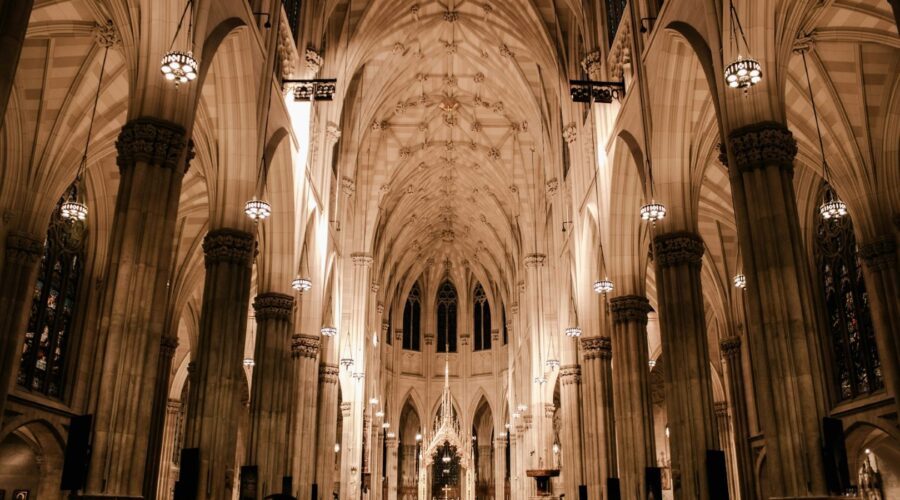
Ash Wednesday: Unveiling the Significance of the Catholic Observance
Ash Wednesday marks the commencement of the solemn season of Lent, a 40-day period of fasting, prayer, and reflection in the Catholic Church. This day is steeped in symbolism and tradition, offering a profound opportunity for spiritual renewal and preparation for Easter.
The History and Meaning of Ash Wednesday
The origins of Ash Wednesday can be traced back to early Christian practices. In the 4th century, the Council of Nicaea established the 40-day period of Lent before Easter as a time of penance and purification. By the 11th century, the practice of applying ashes to the faithful on Ash Wednesday became widespread.
The ashes used in the Ash Wednesday ritual are made from the burned palm branches blessed on the previous Palm Sunday. As the ashes are applied to the forehead of the faithful, the priest utters the words, “Remember that you are dust, and to dust you shall return.” This solemn reminder symbolizes our mortality, humility, and need for repentance.
The Liturgical Practices of Ash Wednesday
Ash Wednesday is a day of fasting and abstinence in the Catholic Church. The faithful are encouraged to abstain from meat and animal products, as well as limit their consumption of food and drink. The liturgical services on Ash Wednesday typically include:
- Mass: The central liturgy of Ash Wednesday, where the faithful gather for the distribution of ashes and the Liturgy of the Word.
- Liturgy of the Word: Includes readings from the Old Testament, the Epistles, and the Gospels, focusing on themes of repentance and conversion.
- Distribution of Ashes: The priest blesses and distributes ashes to the faithful, symbolizing their mortality and need for repentance.
- Penitential Act: A communal prayer of sorrow and repentance, expressing the desire for forgiveness and renewal.
- Eucharist: In some parishes, the Eucharist is celebrated after the distribution of ashes.
The Spiritual Significance of Ash Wednesday
Ash Wednesday marks the beginning of a journey of spiritual renewal. It is a time to:
1. Repent and Seek Forgiveness
Ash Wednesday invites us to reflect on our sins and shortcomings. It is a call to repentance and seeking forgiveness from God and others.
2. Embrace Humility
The ashes on our foreheads serve as a reminder of our mortality and the transient nature of our earthly existence.
3. Prepare for Easter
Lent is a period of preparation for the celebration of Easter, the resurrection of Jesus Christ. Ash Wednesday sets the tone for the journey of conversion and spiritual growth.
4. Practice Self-Discipline
The fasting and abstinence associated with Ash Wednesday are a form of self-discipline, helping us control our desires and focus on spiritual matters.
Tips for Observing Ash Wednesday
For a meaningful Ash Wednesday observance, consider the following tips:
- Attend Mass and receive the ashes.
- Fast and abstain from meat and animal products.
- Reflect on your sins and pray for forgiveness.
- Practice self-discipline and control your desires.
- Make a commitment to spiritual renewal during Lent.
FAQs about Ash Wednesday
Q: Is Ash Wednesday a Holy Day of Obligation?
A: Yes, Ash Wednesday is a Holy Day of Obligation in the Catholic Church.
Q: Who can receive ashes?
A: All baptized Catholics who are present at the Ash Wednesday liturgy may receive ashes.
Q: Can I skip Ash Wednesday if I can’t attend Mass?
A: If you cannot attend Mass on Ash Wednesday, you can still receive ashes later in the day or during the week at your local parish.
Conclusion
Ash Wednesday is a solemn and meaningful occasion in the Catholic Church that marks the beginning of Lent. It is a day of repentance, humility, and preparation for the celebration of Easter. By embracing the traditions and spiritual practices of Ash Wednesday, we can embark on a journey of spiritual renewal and deepen our relationship with God.

Ash Wednesday 2021: A Guide to Observance and Meaning
Ash Wednesday, the first day of the season of Lent, holds significant importance in the Christian calendar and is observed by various Christian denominations worldwide.
Significance of Ash Wednesday
Ash Wednesday marks the beginning of a 40-day period of fasting, prayer, and repentance leading up to Easter, commemorating Jesus Christ’s journey through the desert.
Importance of Ash Wednesday
- Reflect on Mortality: Receiving ashes on the forehead symbolizes the reminder of our own mortality and the transience of earthly life.
- Penance and Forgiveness: Ash Wednesday is an opportunity to confess sins, seek forgiveness, and embark on a journey of spiritual growth.
- Preparation for Easter: Lent serves as a time of reflection and preparation for the celebration of Easter, which signifies resurrection and new life.
Observance of Ash Wednesday
The typical observance of Ash Wednesday includes:
Practices on Ash Wednesday
- Ashing: A priest or minister marks the foreheads of believers with ashes in the shape of a cross, symbolizing mortality and humility.
- Fasting: Traditionally, Catholics and some other denominations abstain from meat and observe a fast, consuming only one full meal and two smaller snacks throughout the day.
- Prayer and Reflection: Ash Wednesday is a time for increased prayer, Bible study, and meditation, focused on themes of repentance, humility, and God’s mercy.
Symbols of Ash Wednesday
Several symbols are associated with Ash Wednesday:
Symbols of Ash Wednesday
- Ashes: Ashes represent mourning, repentance, and the transience of life.
- Cross: The ashes are often applied in the shape of a cross, symbolizing Jesus Christ’s sacrifice and victory over death.
- Purple: The color purple is often worn during Lent, signifying penance, mourning, and humility.
Ash Wednesday 2021: Important Dates
In 2021, Ash Wednesday falls on:
Ash Wednesday 2021
Year Ash Wednesday 2021 February 17th Conclusion
Ash Wednesday 2021 marks a significant beginning to the season of Lent. By observing its practices, symbols, and meaning, we can participate in a time of reflection, repentance, and preparation for the celebration of Easter.
May this Ash Wednesday serve as a reminder of our mortality, inspire us to seek forgiveness, and guide us towards a deeper connection with God.
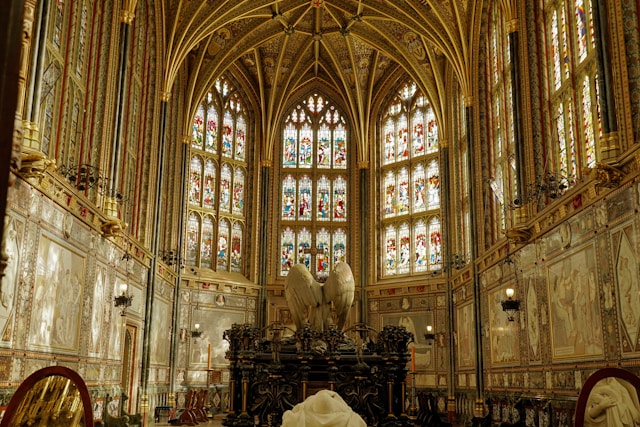
Embracing the Armenian Church: A Comprehensive Exploration of its History, Heritage, and Significance
Introduction
The Armenian Church holds a prominent place in the rich tapestry of Christianity, boasting a profound history, unparalleled heritage, and enduring significance. As one of the oldest Christian denominations, the Armenian Church has played a pivotal role in shaping the spiritual, cultural, and architectural landscape of Armenia and beyond. This comprehensive blog post aims to shed light on the multifaceted nature of the Armenian Church, exploring its historical origins, theological foundations, architectural marvels, and its enduring impact on Armenian society and the world at large.
Historical Origins
Apostolic Foundations
The Armenian Church traces its origins to the apostolic era, with Saint Thaddeus and Saint Bartholomew credited as its founding apostles. According to tradition, they preached the Gospel in Armenia during the first century AD, laying the foundation for the establishment of the Armenian Church in the years that followed.
Adoption of Christianity as State Religion
The Armenian Church reached a turning point in 301 AD when King Tiridates III officially adopted Christianity as the state religion of Armenia. This momentous decision marked a significant milestone in the history of Christianity, making Armenia the first nation to embrace the Christian faith.
Theological Foundations
Orthodoxy and Monophysitism
The Armenian Church adheres to the principles of Chalcedonian orthodoxy, which affirms the dual nature of Christ – both human and divine. However, it also maintains a belief in the Monophysite doctrine, which holds that Christ possesses only a single, divine nature. This theological distinction has played a role in shaping the Armenian Church’s relationship with other Christian denominations.
Unique Liturgical Practices
The Armenian Church has preserved unique liturgical practices that distinguish it from other Christian traditions. The Divine Liturgy, the central act of worship, is celebrated according to ancient rituals and traditions that have been passed down through generations. The use of Armenian as the liturgical language further adds to the distinctiveness of the Armenian Church’s worship.
Architectural Marvels
Etchmiadzin Cathedral
Etchmiadzin Cathedral, located in the city of Vagharshapat, is the spiritual heart of the Armenian Church. Built in the 4th century AD, it is one of the oldest Christian cathedrals in the world and a UNESCO World Heritage Site. The cathedral’s striking architecture and rich symbolism have made it an iconic landmark.
Other Architectural Wonders
Beyond Etchmiadzin, Armenia is home to numerous other architectural masterpieces built by the Armenian Church. These include the Khor Virap Monastery, the Tatev Monastery Complex, and the Geghard Monastery, each with its unique architectural features and historical significance.
Impact on Armenian Society and Culture
Preservation of Armenian Identity
Throughout history, the Armenian Church has played a crucial role in preserving Armenian identity and culture. During periods of foreign occupation and persecution, the Church provided a sanctuary for the Armenian people and helped to maintain their language, traditions, and faith.
Education and Scholarship
The Armenian Church has been instrumental in promoting education and scholarship in Armenia. It established numerous schools and seminaries that contributed to the intellectual and spiritual development of the Armenian people. The Church also played a key role in the development of Armenian literature, music, and art.
Conclusion
The Armenian Church stands as a testament to the enduring power of faith, tradition, and resilience. From its apostolic origins to its present-day presence, the Church has left an indelible mark on Armenian history, culture, and spirituality. Its unique theological foundations, architectural marvels, and societal impact have shaped the Armenian nation and continue to inspire Armenians worldwide. As the Armenian Church enters its third millennium, it remains a vibrant and integral part of Armenian life, carrying forward its rich legacy and contributing to the spiritual and cultural well-being of the Armenian people.
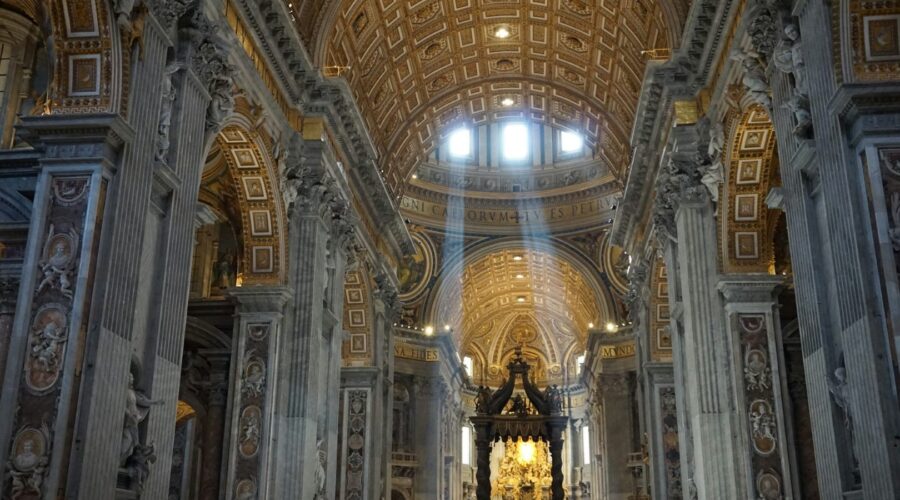
Unveiling the Armenian Apostolic Church: A Tapestry of History, Beliefs, and Traditions
Origins and History
The Armenian Apostolic Church traces its roots to the apostles Thaddeus and Bartholomew, who brought Christianity to Armenia in the 1st century CE. The church was formally established in 301 CE, when King Tiridates III of Armenia proclaimed Christianity as the official religion of the kingdom. This act made Armenia the first nation to adopt Christianity as its state religion.
Throughout its history, the Armenian Apostolic Church has faced numerous challenges, including invasions, persecutions, and schisms. Despite these trials, it has remained a vital part of Armenian identity and culture.
Beliefs and Teachings
The Armenian Apostolic Church is an Eastern Christian church that adheres to the Nicene Creed and the teachings of the early church fathers. Central to its beliefs are the following:
- The Trinity: Belief in one God who exists as Father, Son, and Holy Spirit.
- Christology: Jesus Christ is believed to be fully God and fully human, having come to earth to redeem humanity from sin.
- Holy Trinity: The belief that the Father, Son, and Holy Spirit are coequal and coeternal.
li>The Resurrection: Belief in Christ’s resurrection from the dead, which is the basis of Christian hope for eternal life.
Unique Beliefs and Practices
The Armenian Apostolic Church also holds certain beliefs and practices that distinguish it from other Christian denominations. These include:
- The Anointing of the Sick: A sacrament that involves anointing the sick with oil consecrated by the bishop.
- The Holy Leaven: A ritual performed every seven years during which a piece of the Lamb of God is consecrated and distributed to the faithful.
- Monophysitism: A theological doctrine that claims that Christ has only one nature, which is divine.
Structure and Hierarchy
The Armenian Apostolic Church is headed by the Catholicos of All Armenians, who is the supreme spiritual and administrative leader of the church. The Catholicos is assisted by a Patriarch, who is responsible for the church’s activities outside of Armenia.
The church is divided into dioceses, each led by a bishop. The bishops are assisted by priests and deacons, who serve the local parishes.
Liturgy and Rituals
The Armenian Apostolic Church’s liturgy is based on the teachings of the early church fathers and is conducted in Armenian. The main liturgical elements include:
- The Eucharist: A sacrament in which bread and wine are consecrated and distributed to the faithful.
- Baptism: A sacrament in which a person is initiated into the church.
- Confirmation: A sacrament in which a person receives the Holy Spirit.
Arts and Architecture
The Armenian Apostolic Church has a rich artistic tradition, which includes:
Architecture
Armenian churches are typically domed structures with distinctive cross-shaped plans. Some of the most famous examples include the Cathedral of Etchmiadzin, the oldest Christian cathedral in the world, and the Monasteries of Tatev and Geghard.
Illuminated Manuscripts
Armenian illuminated manuscripts are renowned for their exquisite artwork and calligraphy. These manuscripts often contain biblical texts, historical accounts, and scientific treatises.
Contribution to Armenian Culture
The Armenian Apostolic Church has played a pivotal role in shaping Armenian culture. It has been a center of education, scholarship, and artistic expression for centuries. The church has also played a significant role in preserving the Armenian language and identity.
Conclusion
The Armenian Apostolic Church is a vibrant and ancient Christian tradition that has endured for centuries. Its unique beliefs, practices, and cultural heritage make it an important part of Armenian life and identity. The church continues to play a vital role in the Armenian diaspora around the world, providing spiritual guidance and a sense of community for Armenian people.